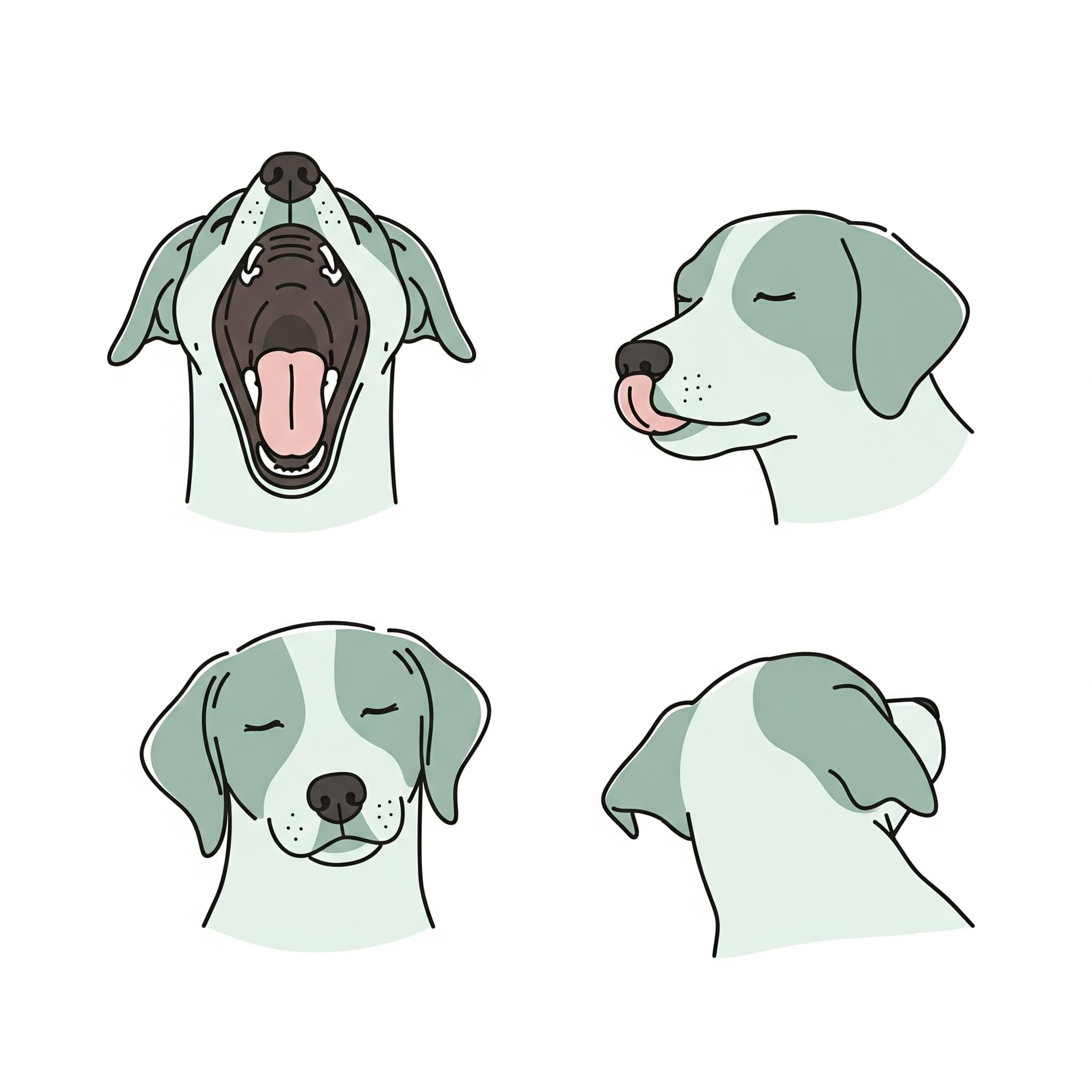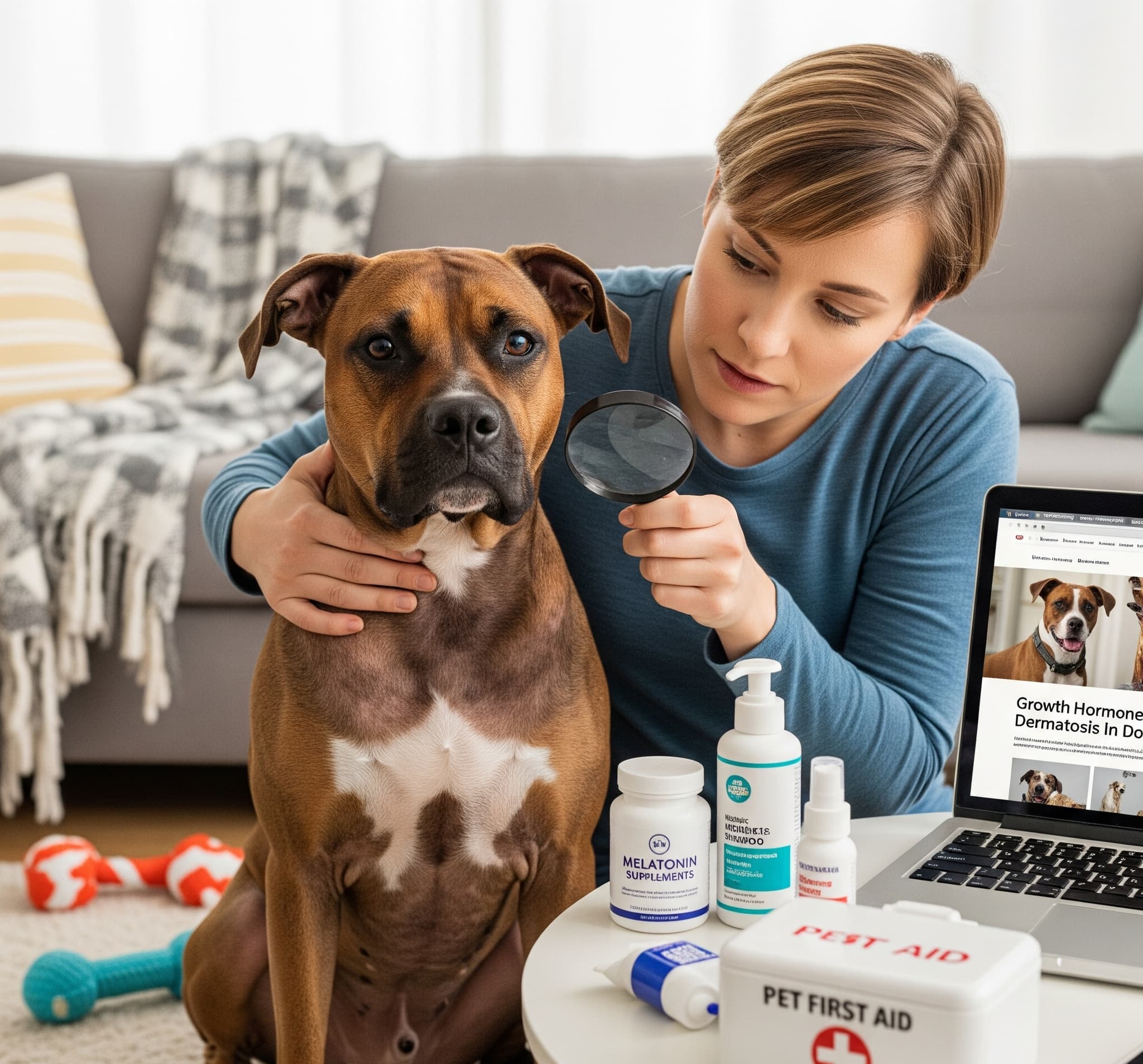Dog Calming Signals: What Your Pet is Telling You
Learn to read your dog’s calming signals and stress signs. Understand what your pet is telling you through body language for better communication.
Introduction
Your dog talks to you every single day. Not with words, but through body language that tells a complete story. Many pet owners miss these important messages their dogs send. Understanding dog calming signals can change how you connect with your furry friend. These signals help dogs avoid conflict and communicate their feelings. When you learn to read these signs, you become a better pet parent.
Dogs use calming signals when they feel stressed, worried, or want to prevent problems. They also show different signs when they feel safe and happy. Learning both types of signals helps you understand your dog’s emotions better.
To help you navigate this guide and quickly find what you need, here are the key sections we’ll explore:
- What Are Dog Calming Signals and Why They Matter
- Common Stress Signals Every Dog Owner Should Know
- Positive Calming Signs That Show Your Dog is Relaxed
- How to Respond When Your Dog Shows These Signals
- Building Better Communication with Your Pet
What Are Dog Calming Signals and Why They Matter
Dog calming signals are special body language cues that dogs use to communicate. Norwegian dog trainer Turid Rugaas first studied these signals in detail. She found that dogs use about 30 different calming signals to talk to other dogs and humans.
These signals serve two main purposes. First, dogs use them to calm themselves when they feel stressed. Second, they use them to calm other dogs or people around them. Think of these signals as your dog’s way of saying “please stay calm” or “I need some space.”
Dogs naturally want to avoid conflict. Wild dogs and wolves use these same signals to keep peace in their packs. Your pet dog still has these instincts. When your dog yawns during training, they might not be tired. They could be telling you they feel overwhelmed.
Understanding these signals helps you become a better pet owner. You can spot when your dog feels uncomfortable before they get too stressed. This prevents behavioral problems and strengthens your bond. Many dog bites happen because people miss the warning signs dogs give first.
Common Stress Signals Every Dog Owner Should Know
Recognizing stress signals in your dog is crucial for their wellbeing. These signs tell you when your dog feels worried, scared, or overwhelmed. Here are the most important stress signals to watch for:
Yawning and lip licking are two of the most common stress signals. Dogs yawn when they feel anxious, not just when tired. They also lick their lips when nervous, even if they haven’t eaten anything. You might see this during vet visits or when meeting new people.
Panting and drooling can show stress, especially when it’s not hot outside. Heavy breathing or excessive drooling during calm moments often means your dog feels worried. This happens frequently during car rides or thunderstorms.
Body language changes tell you a lot about your dog’s mood. A stressed dog might lower their body, tuck their tail, or flatten their ears. They might also freeze in place or move very slowly. Some dogs pace back and forth when anxious.
Avoiding eye contact is another important signal. Dogs turn their heads away or look to the side when they feel uncomfortable. This isn’t rudeness – it’s your dog trying to stay calm. Direct eye contact can feel threatening to dogs.
Displacement behaviors happen when dogs feel conflicted. They might suddenly scratch, sniff the ground, or shake off like they’re wet. These behaviors seem random but actually show internal stress.
Positive Calming Signs That Show Your Dog is Relaxed
Happy, relaxed dogs show completely different body language. Learning these positive signs helps you know when your dog feels safe and content. Here are the key signs of a calm, happy dog:
Soft, relaxed eyes show contentment. A relaxed dog has gentle eyes with normal-sized pupils. They might look at you with a soft gaze or even give you “puppy dog eyes.” Their eyelids look relaxed, not tight or wide.
Natural body posture indicates comfort. A calm dog stands or sits normally with loose muscles. Their tail hangs naturally or wags gently. Their ears stay in a normal position for their breed. Everything about their body looks soft and loose.
Play bow and wiggly movements show pure joy. When dogs lower their front end while keeping their rear up, they’re inviting play. A happy dog might wiggle their whole body when excited. These movements look bouncy and free.
Normal breathing and mouth suggest relaxation. A content dog breathes normally through their nose. Their mouth might be slightly open with their tongue showing, but not panting heavily. This relaxed panting is different from stress panting.
Seeking attention and contact demonstrates trust. A relaxed dog might lean against you, bring you toys, or gently nudge for pets. They choose to be near you because they feel safe. This is very different from clingy behavior caused by anxiety.
How to Respond When Your Dog Shows These Signals
Knowing how to respond to your dog’s signals makes all the difference. Your reaction can either help your dog feel better or make their stress worse. Here’s how to respond appropriately to different situations:
When you see stress signals, give your dog space and time. Don’t force interactions or training when your dog shows anxiety signs. Instead, remove them from the stressful situation if possible. Use a calm, gentle voice and avoid sudden movements.
Create a safe environment for your stressed dog. This might mean moving to a quieter area or ending a training session early. Let your dog choose where they want to be. Sometimes the best help is simply giving them room to breathe.
Reward calm behavior when you see positive signals. If your dog shows relaxed body language, you can offer gentle praise or treats. This teaches them that calm behavior gets good results. Be careful not to get too excited, which might stress them again.
Learn your dog’s triggers by watching when they show stress signals. Some dogs get worried around loud noises, while others struggle with new people. Once you know what bothers your dog, you can help them avoid or slowly get used to these triggers.
Stay calm yourself because dogs pick up on your emotions. If you get stressed or frustrated, your dog will notice. Take deep breaths and keep your body language relaxed. Your calm energy helps your dog feel safer.
Building Better Communication with Your Pet
Improving communication with your dog takes practice and patience. The more you understand their signals, the stronger your relationship becomes. Here are ways to build better communication:
Watch your dog daily to learn their normal behavior. Every dog is different, so spend time observing your pet. Notice how they act when happy, tired, excited, or worried. This helps you spot changes in their mood quickly.
Practice reading signals in different situations. Watch your dog during walks, meal times, and play sessions. See how their body language changes throughout the day. The more you practice, the better you become at understanding them.
Respect your dog’s communication by responding appropriately to their signals. If your dog shows stress signs, don’t ignore them. This builds trust and shows your dog that their feelings matter. Over time, your dog will communicate more clearly with you.
Use positive training methods that work with your dog’s natural communication style. Avoid punishment-based training that can increase stress signals. Instead, use treats, praise, and patience to teach new behaviors. This makes learning fun for your dog.
Create routines that help your dog feel secure. Dogs feel calmer when they know what to expect. Regular meal times, walks, and bedtime help reduce anxiety. Predictable routines mean fewer stress signals throughout the day.
Conclusion
Understanding dog calming signals opens up a whole new world of communication with your pet. These signals are your dog’s way of telling you exactly how they feel. When you learn to read stress signs, you can help your dog before they become too overwhelmed. When you recognize happy, relaxed signals, you know you’re doing something right.
Remember that every dog communicates differently. Some dogs show obvious signals, while others are more subtle. The key is spending time with your dog and learning their unique language. This knowledge helps you become the pet parent your dog deserves.
Start watching your dog’s body language today. Notice their signals during different activities and situations. The more you practice, the better you’ll understand what your pet is telling you. This understanding creates a stronger bond and a happier life for both of you.
Ready to become fluent in your dog’s language? Start observing your pet’s signals today and share your discoveries in the comments below. What calming signals have you noticed in your dog?




Post Comment